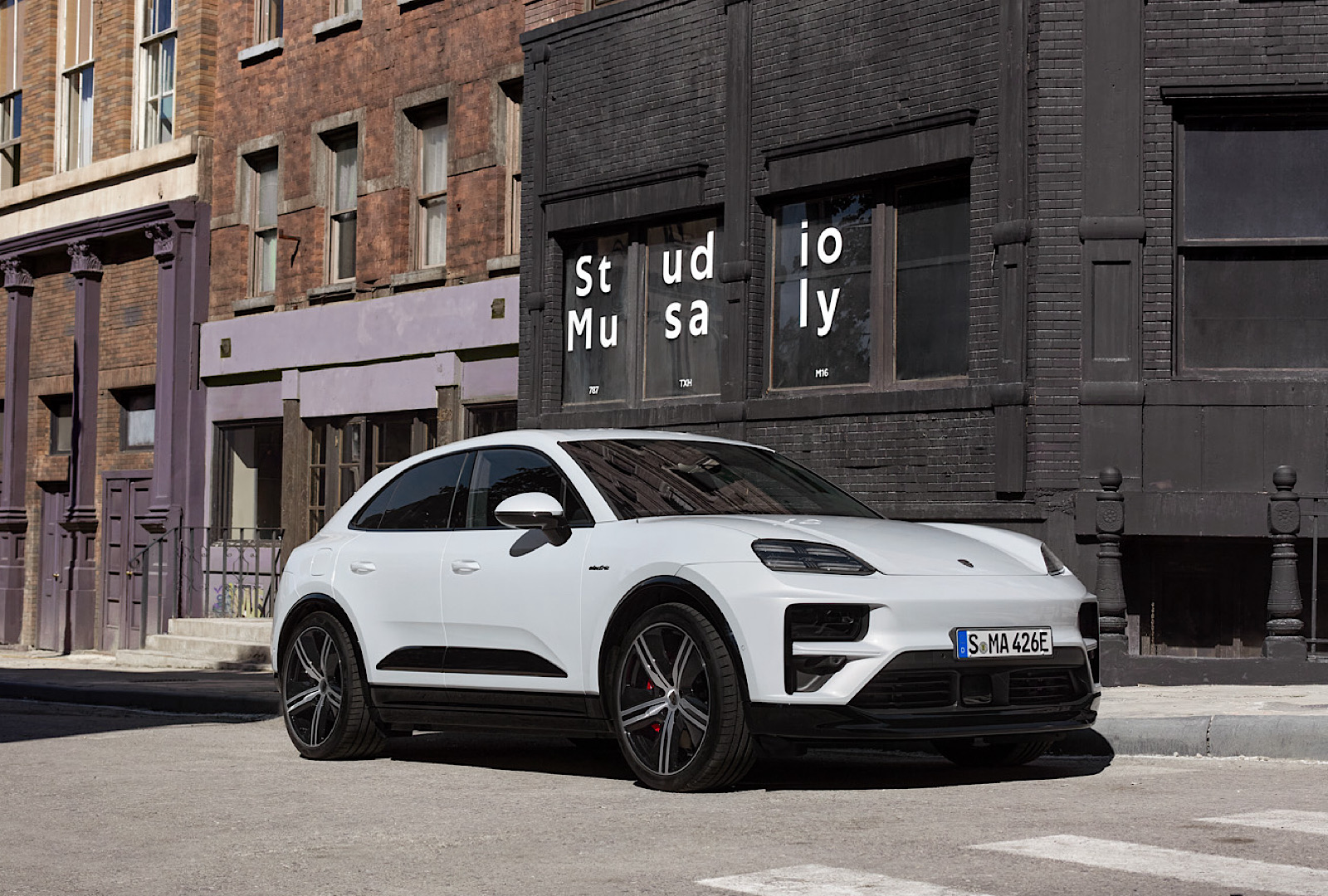
2024 PORSCHE MACAN TURBO: HALF PORSCHE, HALF AUDI, ALL ELECTRIC
The bar for electric vehicles is getting higher, especially luxury models. The technology is not longer new, and engineers are working with designers to trade off on aerodynamics and range in favor of aesthetic choices and interior materials.
Love them or hate them, the Mercedes EQE Sedan and SUV are a prime example of this. Spending $85,000 gets buyers a good amount of everything without losing the feeling that you're in a luxury model.
For Porsche, the bar is even higher. Not only are there luxury expectations with the brand's models, there is a certain level of boutique caché expected with purchase. "I drive a Porsche," means more than, "I have a Mercedes," at this point.
It's because of this expectation, which Porsche have crafted for themselves with years of hard work, that the all-electric version of the 2024 Porsche Macan fails.
Porsche allowed me behind the wheel of its Macan Turbo for review during a recent trip to Germany. While its exterior design is all Porsche, there are some cheap-looking bits here, like the black side embellishments, which stuck out like a sore thumb against the white paint job.
The SUV's Turbonite metallic Crest, available only on Turbo models, turns the historic brand emblem to a dark gray. It's a move like what Rolls-Royce offers with its Black Badge lineup, but manages to lessen the effect of "it's a Porsche" by making the individual badge elements somewhat hidden in the sunlight despite the black-on-paint contrasting tone.
The automaker equipped the tester with 22-inch, carbon fiber Exclusive Design Wheels with Aeroblades, a Manufakur option that retails for $7,410. Those looked sleek, but the price tag hurts the head.
The acceptability of the overall exterior design of the car is put into question once you hop in. The shallow pitch of the hood is fine, but the strongly pronounced fenders and intrusive A-pillars give little visibility for parking in tight areas or cornering on busy city streets.
From the low, sedan-like seating position, you'll want to straighten up and sit up to try to get a better view, but be foiled most of the time.
Where the car is especially solid is its engineering. Resting on the Volkswagen Group's new 800-volt battery-electric vehicle architecture, the SUV is in good hands. The fast-charging, zippy model proves itself with power outputs worthy of Porsche heritage and enough dynamism at speed that it's hard to not recognize it as a Porsche.
The SUV utilizes its 100-kilowatt-hour lithium-ion battery to deliver up to 630 horsepower and 833 pound-feet of torque in the Macan Turbo. Those are proper Porsche sports car figures.
Use that power from its two motors and the all-wheel drive Macan Turbo hunkers down, showing its Porsche roots with the way the handling tightens up and the car seems to beg for more.
That said, most Macans don't live their lives on the winding rural roads outside Stuttgart, Germany, nor on wide-open stretches of Autobahn. They are school runners, estate travelers, and city lurkers.
In the city, the SUV was a listing ship. At low speeds, on cobbled, bumpy and otherwise less-than-stellar roads, the model rode like a ship over waves, wobbling too and fro, tossing its passenger back and forth in the seat.
While the dead weight of the SUV wasn't abundantly apparent in this jostling (no loud thuds from undercarriage over said bumps), the skateboard-like nature of its platform shone through. It was like the Macan Turbo's cabin and chassis were tenuously held together by a Slinky.
This is a puzzling equation. Some of that can be chalked up to the large wheels, but not enough to excuse the behavior. Porsche's Active Suspension Management System is generally foolproof, but here it doesn't overcome the disconnect between the two key vehicle elements.
The cabin's interior design is also a disconnect. While the wide design of the center console is straight from the Porsche playbook, resting a hand on it reveals that the model feels cheap to the touch. Run your fingernails over it and the cost effectiveness of the material is immediately apparent.
Despite being surrounded by black leather in the tester, the cabin reeked of cost cutting. There was no suppleness, no ornamentation, nothing that screamed traditional luxury. Look, I understand that luxury looks different these days, but it doesn't look like this. This makes a Volvo look like a Rolls-Royce.
The installed technology on the 12.6-inch driver information display and 10.9-inch infotainment touchscreen works as advertised with screens easily navigated and settings within just a few screen touches, not buried under burdensome menus.
Like in the 911 and Taycan, getting into this Porsche and driving away is not mentally straining. That's one of the high points of the automaker's modern vehicles.
Macan Turbo's designers take full advantage of the platform to offer two cargo areas (front and rear), delivering the type of space that owners of the previous-generation Macan could only dream of.
Though I have yet to drive the Audi A6 E-Tron, I had time to explore it during its debut. It, like the electric Macan, suffer from the same thing – a lack of specialness. The Audi is a really great Volkswagen. The Macan is a really great Audi. Both feel like a project that needed to be managed for growing costs rather than executing what the customer expects from the heralded brands.
For over $100,000, I'd expect the Macan to be more Porsche-like. For buyers who don't care about driving, but care rather a lot about being seen in a "green" Porsche, the Macan's architecture and styling fit the bill. For everything else, I'd can't imagine not going with the similarly-sized Mercedes-Benz EQE SUV or larger Volvo EX90, or the gas-powered Macan.
2024-07-01T12:12:24Z dg43tfdfdgfd